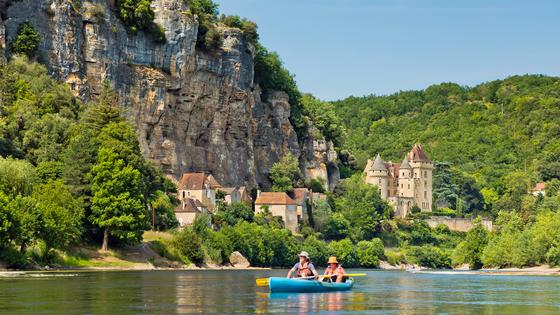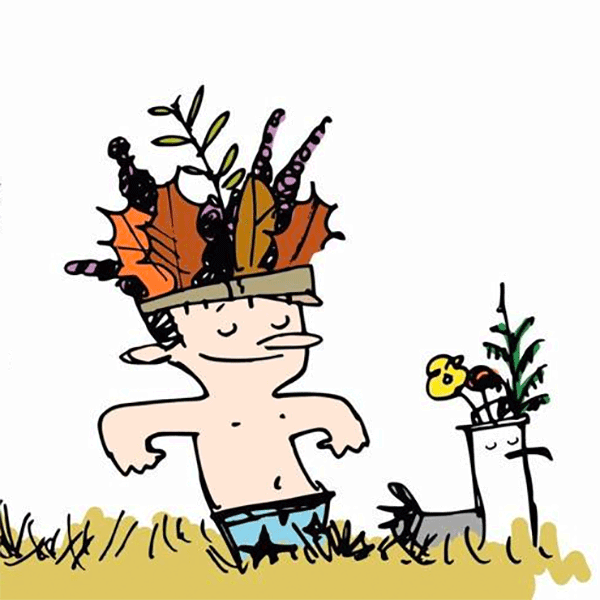Rick Steves’ Europe: France’s Dordogne - Caves, canoes, and culture
A reader once asked me if I were to bring a spry, 73-year-old grandmother to Europe, where would I go? My response: France’s Dordogne River Valley. I’d take her for a lazy canoe ride down the river, then cap the day with a great riverside meal – letting her enjoy goose liver (explaining what it was later) with the finest glass of French red wine she’s ever had.
Whether young or old, visitors to the Dordogne are easily charmed by its unforgettable blend of man-made and natural beauty. Its highlights include rock-sculpted villages, prehistoric cave paintings, fertile farms surrounding I-should-retire-here cottages, floats along the river, and a local cuisine worth loosening your belt for.
When I’m here, one of my rituals is exploring the riverside castles and villages via canoe. I can't think of a more relaxing way to enjoy great scenery while getting some exercise. Delights are revealed around each bend, and you can pop ashore whenever you like. There's always a place to stow the canoe, and plenty of welcoming villages. Two of the most picturesque are La Roque-Gageac, a strong contender for “cutest town in France,” and Beynac, a well-preserved medieval village that winds like a sepia-tone film set from the river to the castle above.
On one particularly memorable Dordogne day, I enjoyed a perfect storm of travel thrills. Pulling my canoe up in Beynac, I hiked up to the brooding, cliff-clinging château. And the noble-lady of the castle herself – land rich but, apparently, cash poor – sold me a ticket to enter and prowl around. It was like stepping back into medieval times. The castle was lit by little oil lamps – puddles of light giving the spiral staircase a visual rhythm. In the knights' mess hall, it felt as if the cooks had just taken a break.
The attendant let me unlock a huge plank door that opened up a treacherous little balcony high above the castle grounds. From that ledge, I reenacted a goofy little speech, which I imagine happened many times during the Hundred Years’ War, fought between the French and English (1337 to 1453). After some dicey negotiations with military types much stronger than him, the local lord would gather his subjects and declare either, “Now you are French” or “Now you are English … deal with it.”
To step back even farther in time, visit one of the area’s prehistoric caves. The Dordogne’s limestone cliffs – honeycombed with painted caves – are unique on this planet. Long before Stonehenge and before the Egyptian pyramids, back when mammoths and saber-toothed cats still roamed the earth, prehistoric people painted deep inside these caves.
The most famous paintings are at Lascaux. Discovered accidentally in 1940 by four kids and their dog, the Lascaux caves quickly degenerated, as more than a million people climbed through this prehistoric wonderland. In just 15 years, the precious art deteriorated more than during the 15,000 previous. Thankfully, the original caves were closed to the public, and experts perfectly recreated the paintings with the same dyes, tools, and techniques used to make the originals. You’ll soon forget you’re looking at a replica.
Descriptions of the caves' impressiveness sound like overstatement until you see them in person. On my first visit I was immediately swept away by the grandeur. Lascaux’s main caverns are more than a football field long, and the hundreds of animal figures (horses, deer, bison, etc.), painted high up on walls and ceilings, are monumental. One bull is 17 feet long.
Nearby is La Roque St. Christophe, a series of river-carved terraces, which has provided shelter for 55,000 years. While the terraces had been inhabited as far back as prehistoric times, the information and reconstructions presented inside focus on the Middle Ages, when people settled here to steer clear of Viking raiders sailing up the river. A clever relay of river watchtowers kept an eye out. When the raiders came, residents gathered their kids, hauled up their animals, and pulled up the ladders. While there's nothing old here except for the gouged-out rock, the family-friendly exhibit makes it easy to imagine the entire village – complete with butcher, baker, and candlestick-maker.
Though unique for its prehistoric sights, the Dordogne is typically French when it comes to a flair for food. One way to enjoy the marvelous cuisine is to visit a few markets, where you’ll find fresh veggies, truffles, foie gras, cheese (the Dordogne is famous for its Cabécou goat cheese), and France’s tastiest strawberries. One of the best markets is in the main town of Sarlat-le-Canéda. Everything is fresh and local – so seasonal that shoppers can tell the month by what's on sale.
From canoes to cave art to cheese, the Dordogne is a rich brew of nature, culture, and cuisine. Once you experience it, you’ll wonder why more Americans don't visit.
========
(Rick Steves (www.ricksteves.com) writes European guidebooks, hosts travel shows on public TV and radio, and organizes European tours. This column revisits some of Rick's favorite places over the past two decades. You can email Rick at rick@ricksteves.com and follow his blog on Facebook.)
©2023 Rick Steves. Distributed by Tribune Content Agency, LLC.
(c)2023 RICK STEVES DISTRIBUTED BY TRIBUNE MEDIA SERVICES, INC.










